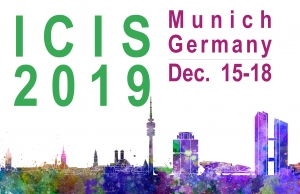Paper ID
2661
Paper Type
full
Description
The overall goal of this design science research project is to design and evaluate a chatbot-based learning system that is able to support novice programmers to learn to write software code in formal learning settings. Our results indicate that such a conversational intelligent programming tutor is suited to take over tasks of teaching assistants in times when no human teaching assistant or lecturer is available for help, e.g., due to resource constraints. For instance, our so-called ‘Coding Tutor’ is able to respond to open-ended knowledge questions, to assess submitted source code automatically or to guide students step-by-step through programming exercises using natural language communication. In addition to providing our situated software artifact, we document our results based on the core components of a design theory as proposed by Gregor and Jones (2007). Thus, we provide the first step toward a nascent design theory for chatbot-based learning systems in IS education.
Recommended Citation
Hobert, Sebastian, "Say Hello to ‘Coding Tutor’! Design and Evaluation of a Chatbot-based Learning System Supporting Students to Learn to Program" (2019). ICIS 2019 Proceedings. 9.
https://aisel.aisnet.org/icis2019/learning_environ/learning_environ/9
Say Hello to ‘Coding Tutor’! Design and Evaluation of a Chatbot-based Learning System Supporting Students to Learn to Program
The overall goal of this design science research project is to design and evaluate a chatbot-based learning system that is able to support novice programmers to learn to write software code in formal learning settings. Our results indicate that such a conversational intelligent programming tutor is suited to take over tasks of teaching assistants in times when no human teaching assistant or lecturer is available for help, e.g., due to resource constraints. For instance, our so-called ‘Coding Tutor’ is able to respond to open-ended knowledge questions, to assess submitted source code automatically or to guide students step-by-step through programming exercises using natural language communication. In addition to providing our situated software artifact, we document our results based on the core components of a design theory as proposed by Gregor and Jones (2007). Thus, we provide the first step toward a nascent design theory for chatbot-based learning systems in IS education.


